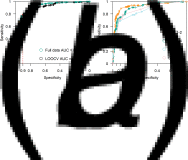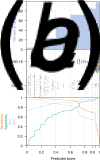Identifying COVID-19 cases in outpatient settings
- PMID: 33814027
- PMCID: PMC8060539
- DOI: 10.1017/S0950268821000704
Identifying COVID-19 cases in outpatient settings
Abstract
Case identification is an ongoing issue for the COVID-19 epidemic, in particular for outpatient care where physicians must decide which patients to prioritise for further testing. This paper reports tools to classify patients based on symptom profiles based on 236 severe acute respiratory syndrome coronavirus 2 positive cases and 564 controls, accounting for the time course of illness using generalised multivariate logistic regression. Significant symptoms included abdominal pain, cough, diarrhoea, fever, headache, muscle ache, runny nose, sore throat, temperature between 37.5 and 37.9 °C and temperature above 38 °C, but their importance varied by day of illness at assessment. With a high percentile threshold for specificity at 0.95, the baseline model had reasonable sensitivity at 0.67. To further evaluate accuracy of model predictions, leave-one-out cross-validation confirmed high classification accuracy with an area under the receiver operating characteristic curve of 0.92. For the baseline model, sensitivity decreased to 0.56. External validation datasets reported similar result. Our study provides a tool to discern COVID-19 patients from controls using symptoms and day from illness onset with good predictive performance. It could be considered as a framework to complement laboratory testing in order to differentiate COVID-19 from other patients presenting with acute symptoms in outpatient care.
Keywords: COVID-19; Classification; diagnosis model; online tool; respiratory symptoms.
Conflict of interest statement
All authors declare no conflict of interest.
Figures




References
-
- Zhou Y et al. A New Predictor of Disease Severity in Patients with COVID-19 in Wuhan, China. medRxiv. Published online March 27, 2020. doi:2020.03.24.20042119. doi: 10.1101/2020.03.24.20042119. - DOI
Publication types
MeSH terms
LinkOut - more resources
Full Text Sources
Other Literature Sources
Medical

